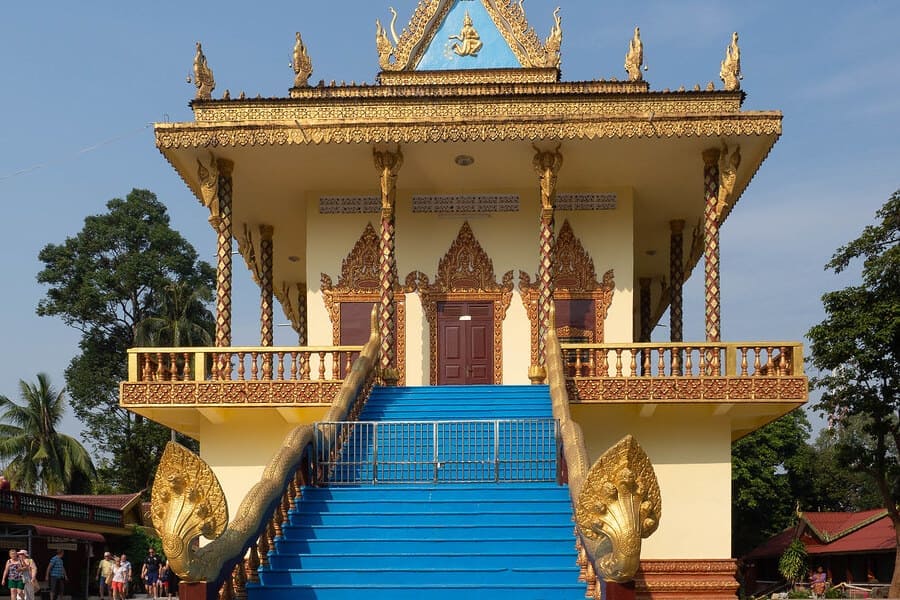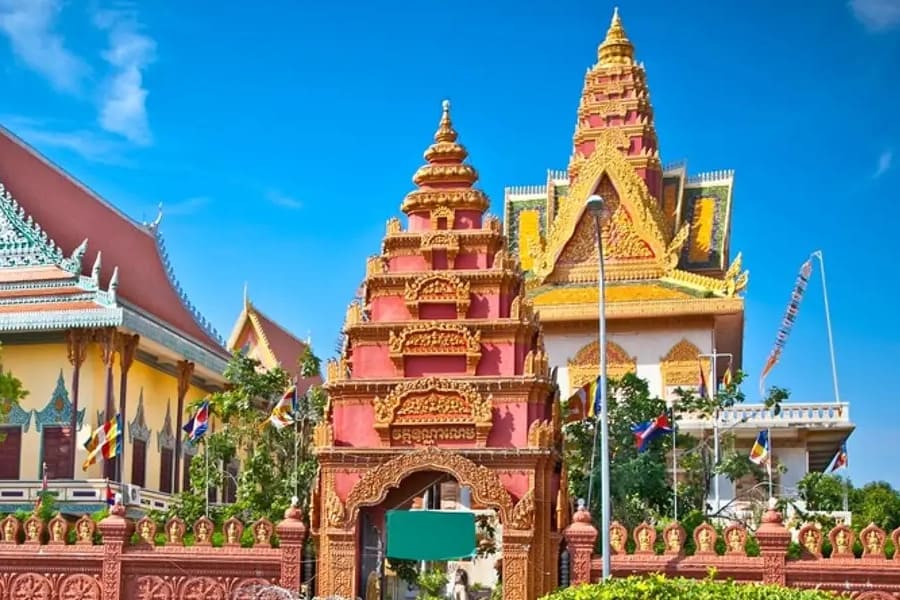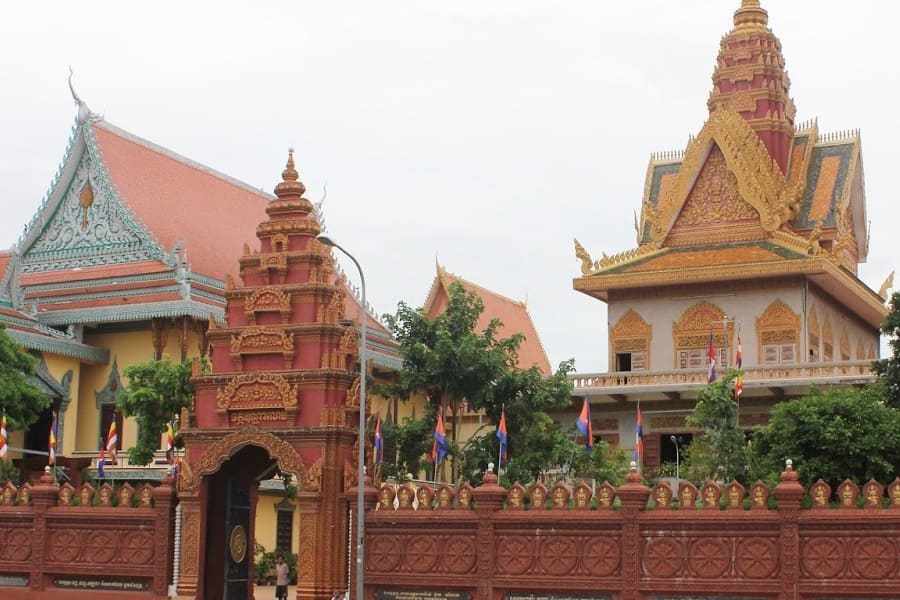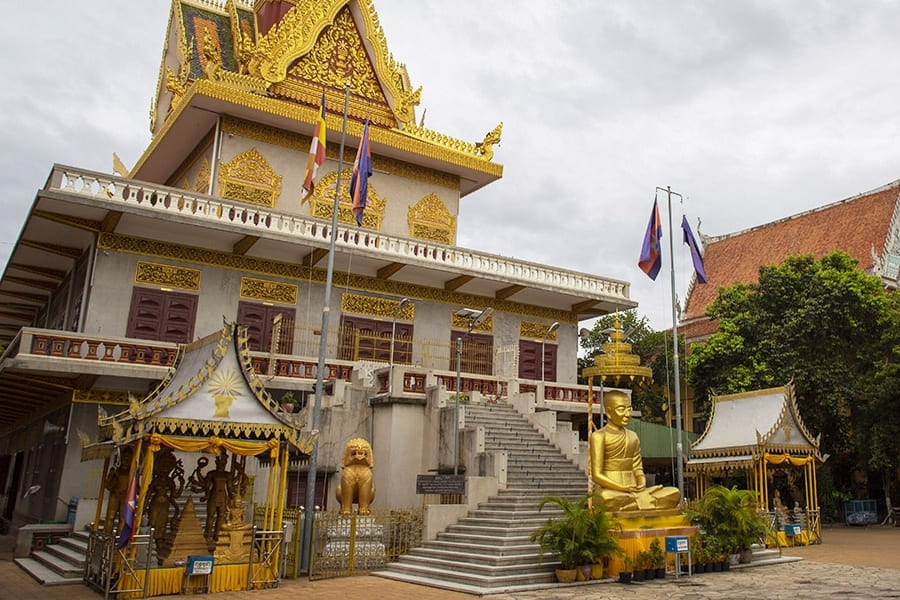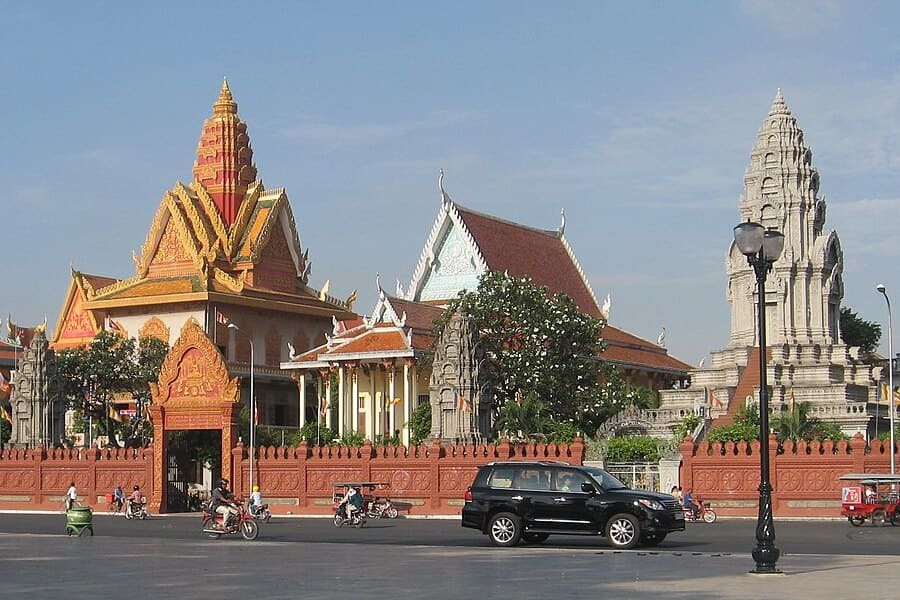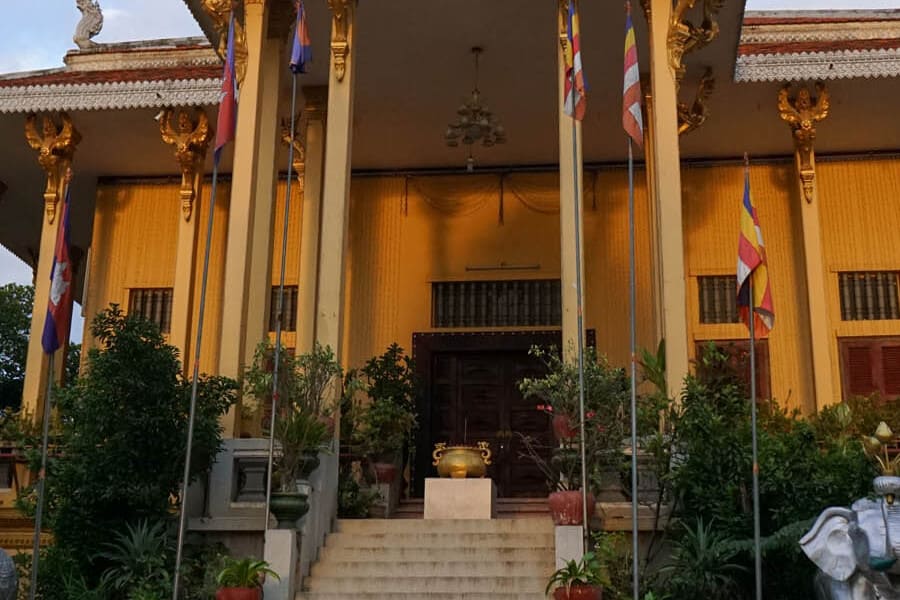During your Cambodia tour package, a visit to Wat Ounalom in Phnom Penh is a must for those interested in cultural and spiritual experiences. As one of the city's prominent Buddhist temples, Wat Ounalom is not only a religious center but also a historical landmark. It houses an impressive collection of artifacts and serves as an important venue for Buddhist ceremonies and teachings. The temple's tranquil atmosphere and architectural beauty offer visitors a serene retreat amidst the bustling cityscape of Phnom Penh.
Contents
The history of Wat Ounalom Temple
The history of Wat Ounalom Temple is deeply intertwined with the rich tapestry of Cambodia's cultural and religious heritage. Dating back to the 15th century, this revered Buddhist temple holds a significant place in the country's history.
Legend has it that Wat Ounalom was founded by the revered monk Samdech Huot Tat, also known as Preah Sri Soryapor, during the reign of King Ponhea Yat. Over the centuries, the temple has played a pivotal role in Cambodia's spiritual and intellectual landscape, serving as a center for Buddhist education, religious ceremonies, and scholarly pursuits.
During the tumultuous periods of Cambodia's history, including the Khmer Rouge regime, Wat Ounalom faced considerable challenges and underwent periods of neglect and destruction. However, it has endured with resilience, emerging as a symbol of hope and resilience for the Cambodian people.
Today, Wat Ounalom stands as a testament to the enduring strength of Cambodia's Buddhist heritage. Its stately architecture, intricate artwork, and sacred relics serve as reminders of the temple's storied past and its enduring significance in the hearts and minds of the Cambodian people.
The architectural features of Wat Ounalom Temple
Wat Ounalom Temple is renowned for its striking architectural features, which reflect the rich cultural heritage of Cambodia and the traditional design elements of Buddhist temples. Here are some of the key architectural elements of Wat Ounalom:
- Main Stupa (Chedi): At the heart of Wat Ounalom stands a majestic stupa, also known as a chedi, which serves as the focal point of the temple complex. This towering structure is adorned with intricate carvings, ornate decorations, and gilded embellishments, symbolizing the spiritual significance of the temple.
- Vihara (Assembly Hall): Surrounding the main stupa are several viharas, or assembly halls, where Buddhist monks gather for religious ceremonies, rituals, and teachings. These halls feature traditional Khmer architecture, characterized by intricately carved wooden beams, soaring ceilings, and elaborately decorated facades.
- Pagodas and Shrines: Throughout the temple grounds, visitors will find a series of smaller pagodas and shrines dedicated to various Buddhist deities, saints, and revered figures. These structures often feature exquisite artwork, including murals, statues, and bas-reliefs, depicting scenes from Buddhist mythology and Cambodian history.
- Buddha Statues: Wat Ounalom is home to numerous Buddha statues, each representing different aspects of the Buddha's life and teachings. These statues are typically made from stone, bronze, or other precious materials and are revered as objects of veneration and meditation by worshippers and visitors alike.
- Courtyards and Gardens: Surrounding the main temple buildings are lush courtyards and manicured gardens, providing peaceful retreats for contemplation and meditation. These green spaces are adorned with flowering plants, statues, and ponds, creating a serene atmosphere conducive to spiritual reflection.
- Decorative Elements: The architectural features of Wat Ounalom are further enhanced by decorative elements such as intricate carvings, colorful murals, and symbolic motifs. These ornamental details serve to embellish the temple's structures and imbue them with a sense of beauty and sacredness.
Tips for Visitors to visit Wat Ounalom
- Dress Code: As a place of worship and cultural significance, Wat Ounalom Temple has a modest dress code that visitors are expected to observe. Both men and women should dress conservatively, covering their shoulders and knees. Avoid wearing revealing clothing or clothing with offensive imagery. It's also customary to remove your shoes before entering the temple buildings as a sign of respect.
- Etiquette and Customs: While visiting Wat Ounalom Temple, visitors should adhere to certain etiquette and customs to show respect for the sacred site and its worshippers. Keep noise to a minimum and refrain from loud talking or disruptive behavior. Photography may be permitted in certain areas of the temple, but always ask for permission before taking photos, especially of worshippers or religious ceremonies. Visitors should also avoid touching or pointing at religious artifacts, statues, or images, as these are considered sacred objects.
- Guided Tours and Information: Consider joining a guided tour of Wat Ounalom Temple to gain deeper insights into its history, architecture, and religious significance. Local guides may offer informative commentary and anecdotes that enhance your visit. Alternatively, informational signage and pamphlets may be available in multiple languages to provide visitors with additional context and information about the temple.
How to get to Ounalom Temple?
To get to Ounalom Temple in Phnom Penh, Cambodia, you can follow these directions:
By Tuk-Tuk or Taxi
The most convenient way is to hire a tuk-tuk or taxi directly to the temple. Tuk-tuks are widely available throughout Phnom Penh and are a popular mode of transport for short distances.
By Walking
If you're staying in central Phnom Penh, particularly near the Riverside area, Ounalom Temple is within walking distance. It's located near the Royal Palace and National Museum, making it accessible on foot if you enjoy walking and exploring the city streets.
Public Bus
Public buses in Phnom Penh are not as commonly used for tourists, but there are local buses that pass by various points in the city. You might need to ask locals or check with your accommodation for specific routes that pass near Ounalom Temple.
Motorbike or Bicycle
For those comfortable with motorbikes or bicycles, you can rent one and navigate the city streets to reach Ounalom Temple. Motorbike rentals are available at various shops and guesthouses in Phnom Penh.
Wat Ounalom Temple Nearby Attractions
While visiting Wat Ounalom Temple in Phnom Penh, travelers have the opportunity to explore several nearby attractions that offer further insights into Cambodia's rich history, culture, and spirituality. Here are some notable nearby attractions:
- Royal Palace and Silver Pagoda: Located just a short distance from Wat Ounalom, the Royal Palace complex is a must-visit destination for travelers interested in Cambodia's royal history and architecture. Explore the ornate buildings, lush gardens, and exquisite artworks housed within the palace grounds, including the revered Silver Pagoda with its dazzling floor adorned with silver tiles.
- National Museum of Cambodia: Situated nearby, the National Museum of Cambodia is home to an impressive collection of Khmer art, artifacts, and archaeological treasures. Delve into Cambodia's ancient past as you admire intricate sculptures, ceramics, and religious artifacts dating back to the Angkor period and beyond.
- Wat Phnom: Perched atop a small hill, Wat Phnom is a historic temple and popular pilgrimage site that offers panoramic views of Phnom Penh. Ascend the grand staircase to explore the temple grounds, where you'll find ornate shrines, statues, and serene gardens.
- Independence Monument: A short stroll from Wat Ounalom, the Independence Monument stands as a symbol of Cambodia's struggle for independence from French colonial rule. Admire the striking architecture of this iconic monument, which is illuminated beautifully at night.
- Riverside Promenade: Take a leisurely walk along the picturesque Riverside Promenade, which stretches alongside the Tonlé Sap and Mekong rivers. Enjoy views of the riverfront attractions, bustling markets, and lively street performers as you soak in the vibrant atmosphere of Phnom Penh.

